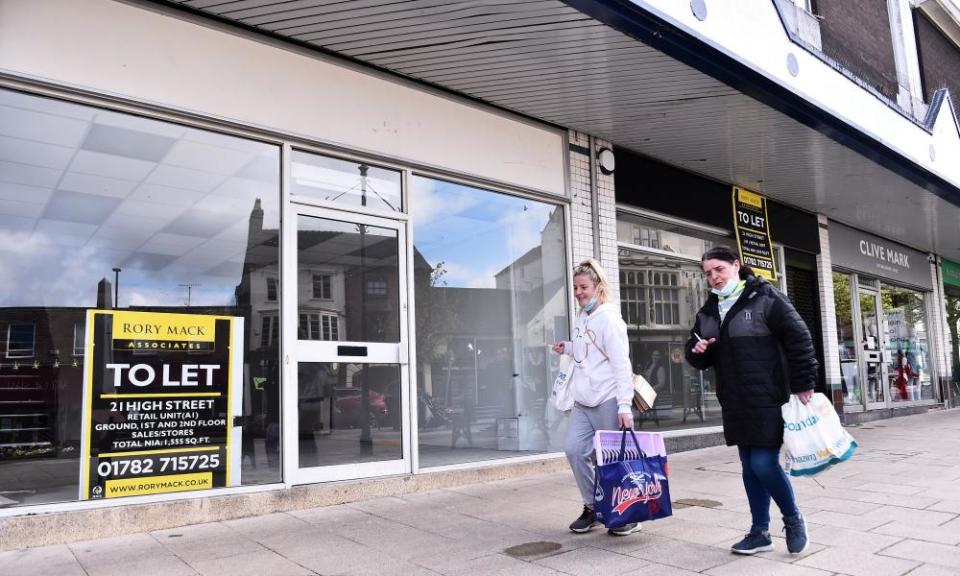One in seven shops now vacant across the UK

More than one in seven shops are now vacant on UK high streets, retail parks and shopping centres, the highest proportion since at least 2015, as the Covid-19 pandemic ramped up pressure on already weakened retailers.
Fashion stores have been hit particularly hard, with a major shift to online shopping during the pandemic, and a lack of parties, events and nights out to dress up for.
Shopping malls, which tend to house more clothing stores, are now searching for tenants for a fifth of their units, according to research from the Local Data Company and the British Retail Consortium.
The change in shopping habits, along with a general shift in spending towards digital entertainment, mobile phones and experiences, has led to an unprecedented series of businesses failures over recent months. The department store Debenhams and the Arcadia Group, which owned Topshop, Miss Selfridge, Dorothy Perkins and Burton, have withdrawn from the high street, becoming online-only brands after being auctioned off to new owners.
The north-east of England had the highest proportion of empty shops, at just over a fifth, and has seen the biggest increase from last summer, as the area has suffered from high Covid rates and low disposable income. Greater London fared best, despite a dive in tourists and commuters visiting the capital, with vacancy rates just over half the rate seen in the north-east.
Helen Dickinson, the chief executive of the British Retail Consortium, reiterated her call on the government to rejig property-based taxes levied on businesses which hamper retailers with physical stores relative to their fast-growing online rivals.
The government has said it will publish a review of business rates this autumn after handing retailers a holiday from the tax throughout the pandemic. The tax break began to unwind last month and will end for all businesses in March.
Related: The Guardian view on the future of high streets: let communities decide | Editorial
Dickinson said: “The vacancy rate could rise further now the Covid-19 business rates holiday has come to an end. The government must ensure the ongoing business rates review leads to reform of this broken system, delivering on its commitment to permanently reduce the cost burden to sustainable levels. The longer the current system persists, the more jobs losses and vacant shops we will see, hurting staff, customers and communities up and down the country.”
Lucy Stainton, director of Local Data Company, said that with vacancy rates now at the highest levels recorded since the company began its survey in 2015, landlords would have to think of different ways to use empty shops as there were not enough new retailers to fill the space.
But she said the figures indicated an improving trend as the increase in vacancy rates had halved from the same period in 2020.
“After an initial flurry of [restructures], closures due to consumer behaviour shifts and cost-cutting exercises, retailers are now starting to dust themselves off with cautious optimism, keeping a close eye on the rapidly changing infection rate and the pace at which vaccinations are taking place – two measures that could seriously derail recovery efforts should they not go in the right direction.”

 Yahoo Finance
Yahoo Finance 